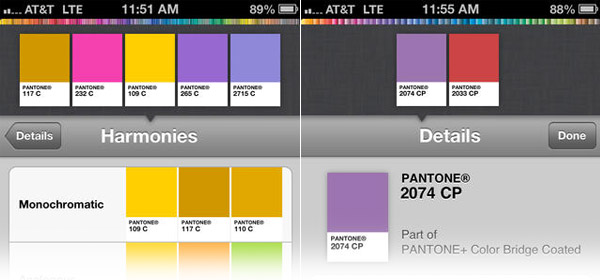Colored 1 2 2 – Create Color Palettes Printable
The New Color Mixing Companion: Explore and Create Fresh and Vibrant Color Palettes with Paint, Collage, and Mixed Media-With Templates for Painting Your Own Color. Try using the corresponding sized color palette via an index which corresponds to the length of the x and y values as following. P.S: your code works fine in matplotlib 2.2.2. For i, k in enumerate(K): # rest of your code plt.scatter(centers0, centers1, c=colorpalette0:i+1, marker = 'x') print (centers0.values) plt.show. The Choice is Easy. Explore color in ways that make your final decision simple. Downloadable color palettes for Photoshop and AutoCAD let you picture Sherwin-Williams paint colors in graphics, designs and more, so you can choose your favorite colors before you paint.
- Colored 1 2 2 – Create Color Palettes Printable
- Colored 1 2 2 – Create Color Palettes Printable Pages
2
Comments
Rank
N/A
Week

25,000+
All-Time
Description
Colors
Share This Palette
Grab this Badge Code
Get this Palette Image
390x300//800x600//1024x768//1600x1200
Use in a Slack theme
Favorited By
Tags
Palette License
- Credit must be given to ruecian.
- Commercial use is not allowed.
- Derivative works are allowed, but must be shared with this license.
Download Options
Latest Palettes
Colored 1 2 2 – Create Color Palettes Printable
//View More ›Latest Patterns
//View More ›Latest Colors
Colored 1 2 2 – Create Color Palettes Printable Pages
//View More ›- Solution
- Color charts
Problem
You want to use colors in a graph with ggplot2.
Solution
The default colors in ggplot2 can be difficult to distinguish from one another because they have equal luminance. They are also not friendly for colorblind viewers.
A good general-purpose solution is to just use the colorblind-friendly palette below.
Sample data
These two data sets will be used to generate the graphs below.
Simple color assignment
The colors of lines and points can be set directly using colour='red', replacing “red” with a color name. The colors of filled objects, like bars, can be set using fill='red'.
If you want to use anything other than very basic colors, it may be easier to use hexadecimal codes for colors, like '#FF6699'. (See the hexadecimal color chart below.)
Mapping variable values to colors
Instead of changing colors globally, you can map variables to colors – in other words, make the color conditional on a variable, by putting it inside an aes() statement.
A colorblind-friendly palette
These are color-blind-friendly palettes, one with gray, and one with black.
To use with ggplot2, it is possible to store the palette in a variable, then use it later.
This palette is from http://jfly.iam.u-tokyo.ac.jp/color/:
Color selection
By default, the colors for discrete scales are evenly spaced around a HSL color circle. For example, if there are two colors, then they will be selected from opposite points on the circle; if there are three colors, they will be 120° apart on the color circle; and so on.The colors used for different numbers of levels are shown here:
The default color selection uses scale_fill_hue() and scale_colour_hue(). For example, adding those commands is redundant in these cases:
Setting luminance and saturation (chromaticity)
Although scale_fill_hue() and scale_colour_hue() were redundant above, they can be used when you want to make changes from the default, like changing the luminance or chromaticity.
This is a chart of colors with luminance=45:
Palettes: Color Brewer
You can also use other color scales, such as ones taken from the RColorBrewer package. See the chart of RColorBrewer palettes below. See the scale section here for more information.
Palettes: manually-defined
Finally, you can define your own set of colors with scale_fill_manual(). See the hexadecimal code chart below for help choosing specific colors.
Continuous colors
[Not complete]
See the scale section here for more information.
Color charts

Hexadecimal color code chart
Colors can specified as a hexadecimal RGB triplet, such as '#0066CC'. The first two digits are the level of red, the next two green, and the last two blue. The value for each ranges from 00 to FF in hexadecimal (base-16) notation, which is equivalent to 0 and 255 in base-10. For example, in the table below, “#FFFFFF” is white and “#990000” is a deep red.
(Color chart is from http://www.visibone.com)